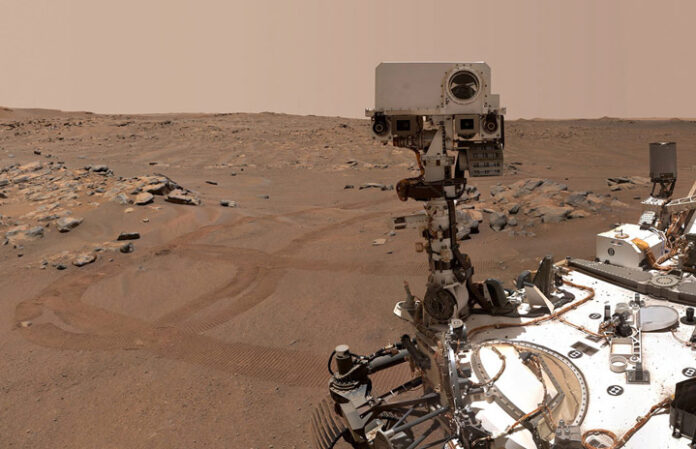Transforming Mars into a more hospitable world for human habitation is a common theme in science fiction. However, recent scientific proposals suggest that this ambitious goal could be approached in reality. Researchers are now exploring a novel method to warm Mars by introducing engineered particles into its atmosphere. These particles, similar in size to glitter and composed of iron or aluminum, would be released as aerosols to trap heat and reflect sunlight onto the Martian surface. This approach aims to enhance the natural greenhouse effect on Mars, potentially raising its average surface temperature by approximately 50 degrees Fahrenheit (28 degrees Celsius) over a decade.
While this temperature increase alone would not render Mars immediately habitable, it represents a promising initial step. Edwin Kite, a planetary scientist from the University of Chicago and a lead author of the study published in Science Advances, explains that the method proposed is both innovative and potentially more efficient than previous strategies. Traditionally, terraforming Mars has focused on releasing greenhouse gases, but these methods require substantial resources that are currently scarce on the Red Planet. Kite’s team suggests that using nanoparticles could be a more viable way to modify Mars’ climate, potentially informing future exploration and colonization strategies.
NASA has made significant strides in exploring Mars with robotic rovers and the InSight Lander, and its Artemis program is preparing for future human missions to Mars. Despite these advancements, there are numerous challenges to establishing human settlements on Mars. These include a lack of breathable oxygen, harmful ultraviolet radiation due to its thin atmosphere, hostile soil conditions for crop growth, frequent dust storms, and frigid temperatures. The median surface temperature on Mars is about minus-85 degrees Fahrenheit (minus-65 degrees Celsius), and its thin atmosphere allows solar heat to escape rapidly into space.
The proposed method involves continuously releasing tiny rod-shaped particles, known as nanorods, into the Martian atmosphere at a rate of approximately eight gallons (30 liters) per second over several years. The idea is to either transport the particles to Mars or, preferably, bring equipment to manufacture them on the planet itself, utilizing the abundant iron and aluminum available on Mars’ surface.
Samaneh Ansari, a doctoral student in electrical and computer engineering at Northwestern University and lead author of the study, emphasizes that while this approach could potentially warm Mars, it is still an experimental idea. The scientists are also considering the potential unintended consequences of such large-scale climate modification. For instance, there is interest in whether Mars has ever harbored life, or if it may currently host subsurface microbes.
If Mars’ soil contains compounds toxic to Earth-derived life, warming the planet might not be beneficial. Conversely, if a biosphere could be established, it could significantly expand humanity’s ability to thrive in the solar system. Kite notes that understanding the risks and benefits of warming Mars is crucial, as this knowledge could have profound implications for future human exploration and potential settlement. The study aims to spark further scientific discussion and exploration of these intriguing possibilities.




